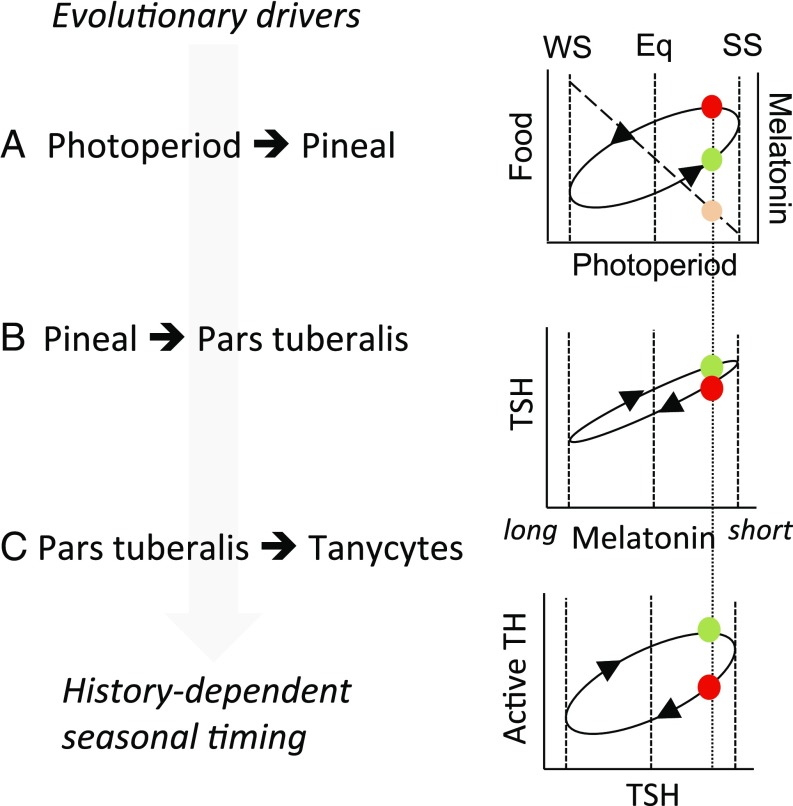Fig. 5.
Encoding of photoperiodic history dependence. (A) Environmental conditions influencing bioenergetic status (e.g., food) follow an elliptical history-dependent relationship to photoperiod. At a given photoperiod in the spring (green circle), there is less food available, but favorable conditions in prospect, compared with the corresponding photoperiod in the autumn, when more food is available but unfavorable conditions are in prospect. This difference between spring and autumn is the evolutionary driver for history-dependent interpretation of photoperiod. The nocturnal melatonin signal duration is proportional to night length regardless of history, so melatonin signals on equivalent spring and autumn photoperiods are indistinguishable (orange symbol). (B) The pars tuberalis transduces melatonin signal duration into production of TSH. No history dependence was observed at this level in the present study, but effects have been reported in other seasonal paradigms (27, 28) and may contribute to ellipsis in the encoded response to photoperiod. (C) Strong history dependence is seen in the hypothalamic response to TSH, giving a history-dependent internal representation of calendar time. Eq, equinox; SS, summer solstice; WS, winter solstice.

